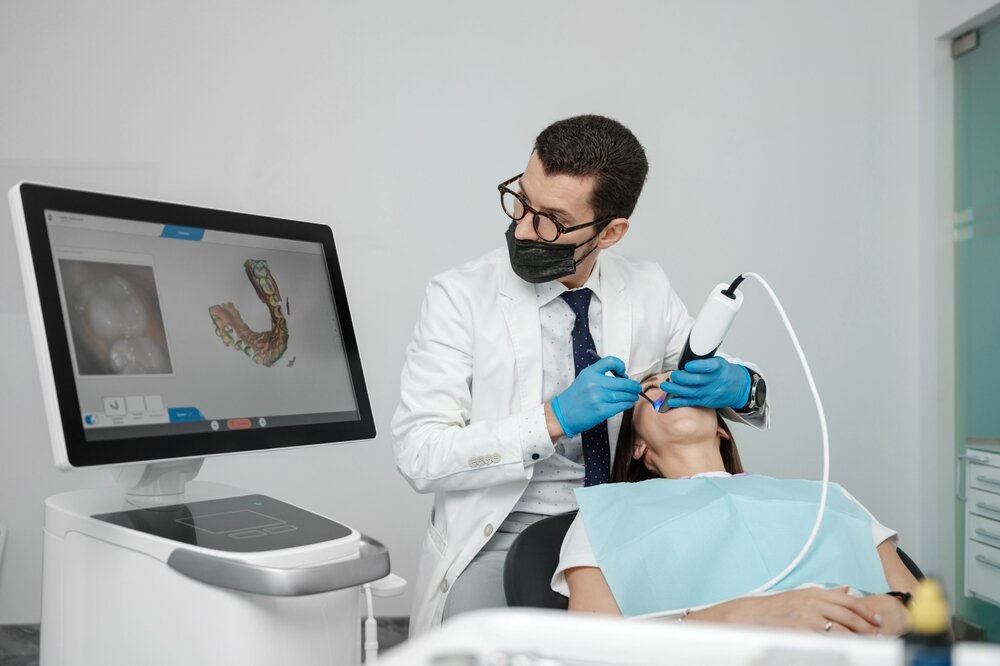Dental care has come a long way from messy impressions, long wait times, and unpredictable results. With the rise of digital design technologies, the way dental professionals approach patient care is completely transformed. Digital tools are now at the heart of modern dentistry, creating a more efficient, accurate, and personalized experience for dentists and patients.
The Evolution of Dentistry Through Technology
Traditionally, dental procedures required much manual work from hand-sculpted crowns to plaster models that were time-consuming and inconsistent. While these methods served their purpose for decades, they left room for improvement, especially regarding precision and patient comfort.
Enter digital design.
Today, advanced technologies like CAD/CAM (Computer-Aided Design/Computer-Aided Manufacturing), 3D scanning, and digital imaging are changing how dental care is delivered. Dentists can scan a patient's mouth in minutes, create a digital model, and design restorations or orthodontic solutions with unmatched precision. This speeds up the process and improves the overall quality of care.
How Digital Design Enhances Patient Experience
One of the most significant benefits of digital design in dentistry is the enhanced patient experience. Patients no longer have to bite down on uncomfortable impression materials or return multiple times for fittings and adjustments. Digital scans are quick, noninvasive, and much more comfortable.
Once a digital impression is captured, the data can be instantly used to design crowns, veneers, bridges, and aligners. This means patients spend less time in the chair and more time enjoying their improved smile. The results are more predictable, and the aesthetic outcomes are better tailored to each individual's facial structure.
Precision That Traditional Methods Can't match
Digital design allows for an extraordinary level of accuracy that manual techniques can't compete with. Every tooth, curve, and gap is captured in high-definition detail, ensuring that restorations fit perfectly the first time. This is especially valuable in complex procedures like full-mouth reconstructions or implant placements, where precision is crucial.
Technologies like 3D printers and milling machines bring these digital designs to life, producing final restorations that are strong, durable, and aesthetically pleasing. Whether a single crown or a complete set of veneers, the result looks natural and feels right.
The Role of Smile Art Lab in the Digital Design Journey
In the middle of this digital transformation, specialized labs play a key role in bringing designs from the screen to reality. Smile Art Lab, for instance, focuses on creating customized dental solutions using the latest digital design technology. Their commitment to detail and artistry ensures that every smile they help create is unique and perfectly matched to the patient.
Labs like these serve as vital partners for dental professionals. They turn digital impressions into beautiful, functional restorations with the help of cutting-edge equipment and skilled craftsmanship. The synergy between clinics and labs ensures patients receive results exceeding expectations.
Aesthetic Dentistry Meets Digital Innovation
Cosmetic dentistry has particularly benefited from digital advancements. From smile simulations that show patients what their new smile will look like to designing veneers that complement skin tone and facial features, digital design has taken smile makeovers to the next level.
Dentists can now collaborate more effectively with patients by showing them digital previews before any procedure begins. This level of involvement helps patients feel more confident and excited about their treatment plans.
Digital smile design also allows for consistency. If digital workflows are in place, patients can expect the same level of quality whether they visit a dentist in a small town or a large city. This standardization is vital as patients become more informed and expect high-quality results wherever they go.
Faster Turnaround Times Without Sacrificing Quality
Speed and efficiency are also hallmarks of digital dental design. What used to take weeks can now be accomplished in a matter of days or even hours in some cases. This technology makes same-day crowns and on-site milling possible, allowing dentists to deliver results quickly without sacrificing precision.
This is a game-changer for patients with tight schedules or those who feel anxious about dental visits. Fewer appointments mean less time off work, fewer disruptions to daily life, and an overall smoother process.
Training the Next Generation of Dental Professionals
As digital design becomes more prevalent, dental schools and training programs incorporate these technologies into their curriculum. This means future dentists will be well-versed in digital workflows from the start and enter the workforce prepared to deliver modern care.
For existing professionals, continuing education programs offer a chance to upgrade their skills and stay competitive in a rapidly changing field. Embracing digital design is no longer optional—it's essential for any practice that wants to provide the best care possible.
Final Thoughts
Digital design is more than just a trend, it's a true revolution in dental care. It has redefined what's possible in general and cosmetic dentistry, offering better outcomes, greater comfort, and faster service. From improved accuracy to enhanced collaboration with labs like Smile Art Lab, this shift makes smiles brighter and patients happier.
As technology continues to evolve, so too will the capabilities of dental professionals. One thing is clear: the future of dentistry is digital, and that future is already here.
 Online Clock
Online Clock